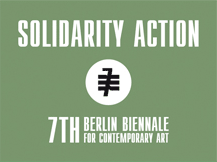Personally I have always believed that art is the assimilation between a political act and a poetic act, or more precisely that the aesthetic act per se becomes and influences like a political act and that therefore, as such, it is made concrete as a conflictual mechanism between the meaning of the world and the world itself as pure epiphany. The political act as parceling of the perceptible is the configuration of a specific space divided into subjects, objects, roles and identities; it is the subdivision of the visible and invisible that are in conflict with each other. Politics consists in reconfiguring the parceling of the perceptible, introducing new subjects and objects, making visible what is not visible. Occupy Wall Street and all the various Occupy movements form a chain, today, as new subjectivities of reinterpretation of what exists, reassignment of roles. The documentation of OWS at Zuccotti Park, in the series Gravity Hill NEWSREEL by the American filmmaker Jem Cohen, is simply the representation of the becoming of insurrectional subjectivity capable of challenging the economic imbalance of the existing world. Jem Cohen represents, in this case, the artistic nexus between politics and aesthetics, where the poetic action consists in going along with the focus on political issues. The responsibility of an artist can be gleaned from the way they dive and plunge into the reality in which they live/migrate/navigate, in their way of relating to the social and institutional context, generating queries, doubts and active participation. In this dynamic, art functions as a critical device, a poetic connector between protest movements and corporative institutions. But it is only art that can shatter/violate this barrier, not vice versa.
Only art with its attitude can activate forms of dissent and critical thought regarding the global system of construction, communication and manipulation of the real. As Jacques Rancière writes, we find ourselves in a sort of contemporary paradox: “the paradox of our time is that this art, uncertain of its politics, is increasingly encouraged to intervene due to the lack of politics in the proper sense of the term. Indeed, it seems as if the time of consensus, with its shrinking public space and effacing of political inventiveness, has granted to artists and their mini-demonstrations, their collections of objects and traces, their devices of interaction, […] a substitutive political function” (Aesthetics and Its Discontents, Malden MA 2009, Polity Press, pag. 60.)
TERESA MACRÌ
Art critic, professor of Phenomenology of contemporary arts at the Academy of Fine Arts of L’Aquila.


